The Sunderland legends buried Bishopwearmouth Cemetery, including MPs, tycoons, an SAFC founder and a lion tamer
and live on Freeview channel 276
Is it Sunderland’s best? We wouldn’t like to say. But we do know that some extraordinary people are buried there. This feature gives just a thimbleful of their history.
All graves are intriguing and no life is more valued than the next. Nevertheless, certain people still get top billing; even beyond the grave. Regrettably we are forced to omit many, many.
Advertisement
Hide AdAdvertisement
Hide AdThe Vaux and Binns families
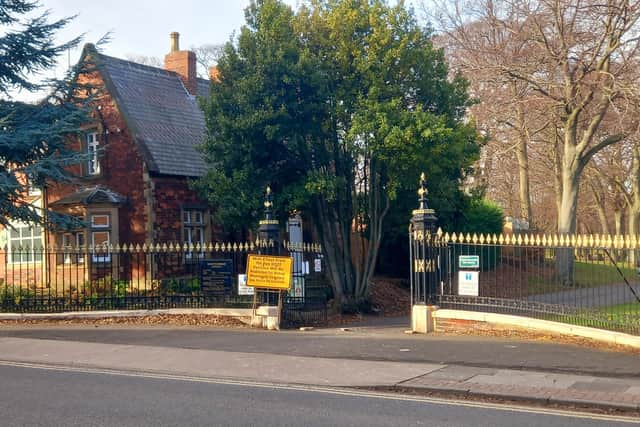

Cuthbert Vaux founded his famed and much-missed brewery in 1806. Among his descendants to rest in Bishopwearmouth are his son, also called Cuthbert (1813-78), who lies alongside his two wives.
Cuthbert jnr’s son Ralph Thomas Vaux, 1836-1928, is in a separate grave along with his son Dr Ralph Thomas (to keep things complicated) Vaux, 1874-1917.
Joseph John Binns, 1839-1922, of the department store dynasty inherited control of the business on the retirement of his father Henry Binns in 1865. Joseph is buried with his wife Rose. Their son Christopher Binns, who fell during the Third Battle of Ypres in 1917 is commemorated, but is actually buried in Flanders.
Joseph’s older brother Sir Henry Binns, born in Sunderland in 1837, became Prime Minister of the Colony of Natal in what is now South Africa. He lost a hugely important court case over Indian labourers to lawyer Mahatma Gandhi.
Advertisement
Hide AdAdvertisement
Hide Ad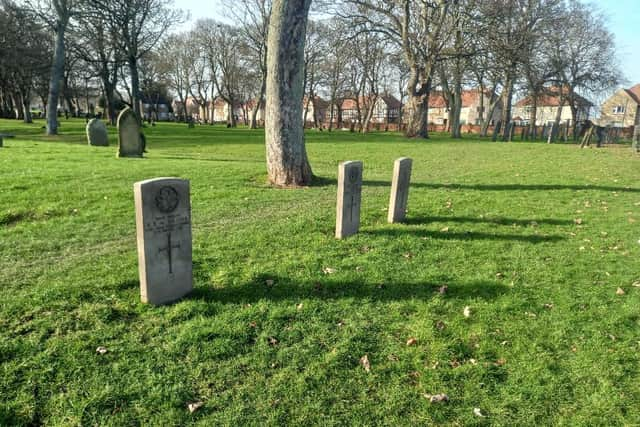

Giants of shipbuilding, Echo founder and other bigwigs
Sunderland’s glorious shipbuilding heritage is represented in Bishopwearmouth. A number of Doxfords rest there, including Sir Theodore Doxford, 1841-1916. Aside from being a shipping magnate, he was also a politician.
At the 1895 general election he became a Conservative MP for Sunderland, after defeating the Liberal and Sunderland Echo founder Samuel Storey. He stood down in 1906. In 1898 he attended William Gladstone’s funeral.
Not to be outdone, there is a nearby memorial to Samuel Peter Austin and other members of his family. In 1826 Austin founded SP Austin & Son Ltd. The shipbuilders merged with William Pickersgill & Sons Ltd in 1954 to become Austin & Pickersgill.
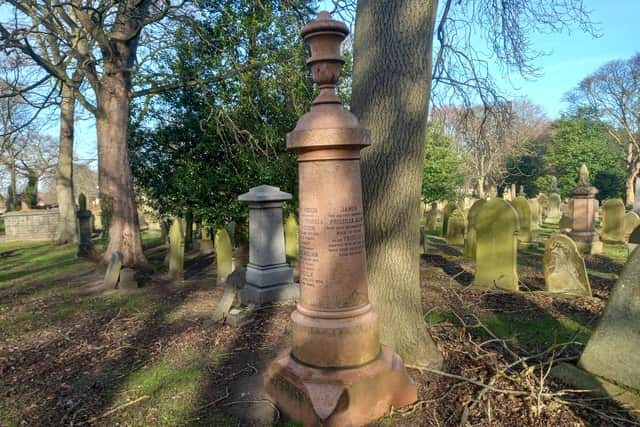

Alumni of Bede School will be familiar with the name Ettrick. The Ettricks owned much of High Barnes at one time, including a huge mansion on the site where the Little Sisters care home now stands. Anthony Ettrick, 1813-1885 is among the family members buried in Bishopwearmouth.
Advertisement
Hide AdAdvertisement
Hide AdInterred in a huge mausoleum is another of the seven founders of the Sunderland Echo, Thomas Scott Turnbull, 1825-1880. He made his fortune in drapery and became Mayor of Sunderland in 1879.
His son, Thomas Strover Turnbull, still holds the record for the youngest member of a winning team in the never-boring Boat Race, rowing for Cambridge in 1873 aged 18 and 12 days.
Military heroes
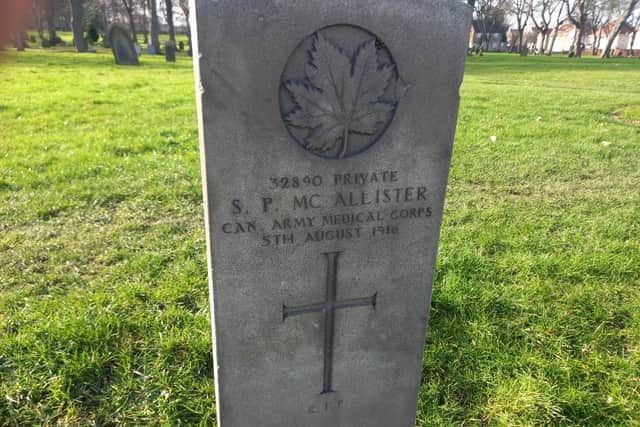

Away from the super-rich, there is a memorial to George Allan Maling, 1888-1929, on the grave of his parents. A Sunderland-born doctor, Maling was awarded the Victoria Cross in 1915 after he continued preserving life under heavy shelling during the Battle of Loos. He has a blue plaque on Mowbray Road.
Major General John Reed 1783-1859, is another Bishopwearmouth resident with a distinguished war record. He fought alongside the Duke of Wellington against Napoleon.
Advertisement
Hide AdAdvertisement
Hide AdBeing less well-known doesn’t necessarily make anyone less interesting, dead or alive. For example, some Commonwealth war graves are set well apart from the main section. Why?
Near the east perimeter wall lies Private SP McAllister of the Canadian Army Medical Corp. He died on August 5, 1916. Why is he there?
We had no further details until our readers were kind enough to fill in the gaps.
The soldier’s full name was Stephen Patrick McAllister, born in Sunderland on August 2, 1887, which means that he died just three days after his 29th birthday.
Advertisement
Hide AdAdvertisement
Hide Ad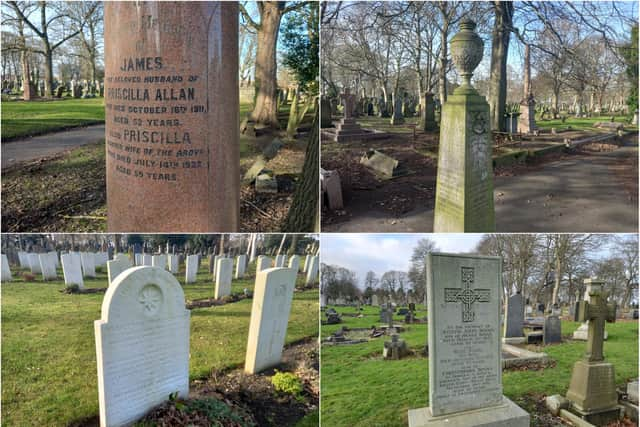

In 1901 he was living on St Vincent Street and and his father John was working on a new pier, presumably the current Roker pier, completed in 1903.
The 1911 census shows that Stephen living with his sister and her husband in Boldon. All three are listed as “tobacconists”. He probably emigrated to Canada in search of a better life.
Canada was brought into conflict after The Britain’s declaration of war on August 4, 1914 as it was a British dominion.
Stephen enlisted, was hospitalised with shell shock and died of a heart attack; possibly in a military hospital near a battlefield, or he could have been recuperating in Sunderland.
Advertisement
Hide AdAdvertisement
Hide AdWorld War One enthusiast David Sloan said: “I think it’s a sad story, even for World War One. The people we hear about being killed; it’s usually a heroic story. To be working in an ambulance, he must have seen some horrific things.”
Maccomo the Lion Tamer
Perhaps the most intriguing grave in the entire cemetery is that of Maccomo the lion tamer, born at some point in the 1830s, he died in Sunderland in 1871. His headstone gives his age at death as 32, but that is almost certainly a guess. He was born either in some exotic and far-flung part of Africa, the West Indies – or Liverpool.
Famed in his day, he survived an attack by Wallace the lion, who still stands stuffed and surly in Sunderland Museum. However, Maccomo succumbed to rheumatic fever in the Palatine Hotel.
Strangely he rests in the Commonwealth war graves section beside those who lost their lives in World War Two, 70 years or so after his death. No one seems to know why this should be.
Advertisement
Hide AdAdvertisement
Hide AdMuch of his headstone is little more than an advert for the menagerie of his appalling boss, William Manders.
Luke Thompson MP
Another Conservative MP’s grave is that of Sir Luke Thompson, 1867-1941, who made his money in coal (owning, not digging). His headstone says he was the member for Sunderland from 1922 to 1935, which isn’t quite true.
Between 1929 and 1931 he was replaced by Marion Phillips; an extremely dour woman, but a fearsome and historically important figure in the Labour Party.
James Allan, founder of Sunderland AFC
One man who rests in Bishopwearmouth looms large in the lives of many Wearsiders, whether they know it or not.
Advertisement
Hide AdAdvertisement
Hide AdJames Allan, 1857-1911 was a teacher from Scotland, In 1879 he founded Sunderland Association Football Club. Yes, he’s to blame.
In 1888 he left the club acrimoniously and founded Sunderland Albion FC. The club only lasted until 1892, their demise helped by some underhand scheming by their bigger neighbours.
James Allan died at home in Elmwood Street.
Poor Mrs Wilson
Another grave, for a woman who died in 1935, catches the eye due to its inscription which reads: “To my dear wife Elizabeth Wilson, who died after a long and painful illness.”
What on earth possessed Mr Wilson, who joined her three years later, to allude perpetually to the nature of his spouse’s unpleasant demise. Perhaps he couldn’t stand her. We can only speculate.
There are so many others in this place who will forever fascinate, so we recommend a visit. You can round off your exploration with tea and stickies in the Lodge Cafe.
